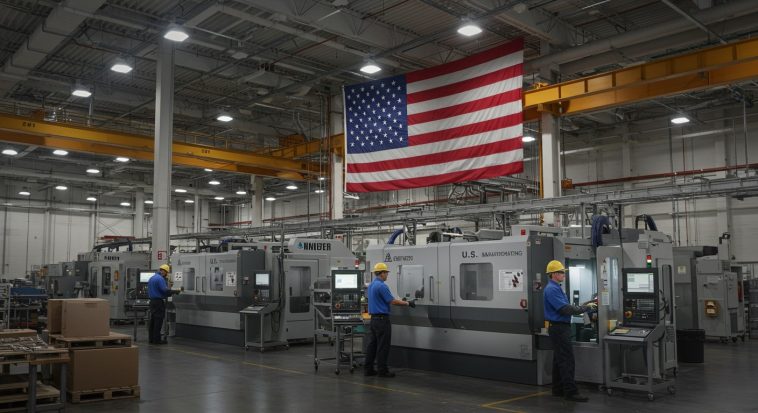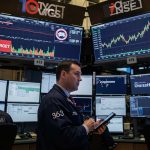Despite bold promises of a blue-collar renaissance, President Donald Trump’s tariffs may not deliver the manufacturing job boom many hoped for, according to a new analysis by Wells Fargo.
A Costly Vision of “Made in America”
President Trump’s trade strategy—built on raising tariffs to pressure foreign producers and entice U.S. companies to bring factory jobs back home—is facing serious economic headwinds, the Wells Fargo report warns.
While the idea of revitalizing American factories has political appeal, the reality is far more complex. Bringing production back to the U.S. would significantly increase labor costs, which could eat into corporate profits or drive up consumer prices. According to the report, many firms simply can’t justify the expense.
“Even with the promise of tax incentives or patriotic branding, companies face steep operational costs here,” said Sarah House, senior economist at Wells Fargo. “Add in a shortage of available factory workers, and the prospect of widespread reshoring becomes even less practical.”
The Labor Puzzle
The U.S. currently boasts a historically low unemployment rate and a tight labor market—particularly in the manufacturing sector. There are roughly 7.2 million unemployed Americans today, but to return to 1979 peak levels of manufacturing employment, the U.S. would need about 6.7 million more factory workers than it currently has.
In short, the labor pool simply isn’t deep enough. “There’s not just a skills gap—there’s a sheer numbers gap,” said Alex Greene, a supply chain analyst based in Chicago. “Even if companies want to come back, there aren’t enough trained workers to meet demand.”
A Trade War’s Mixed Signals
Trump’s aggressive trade policies have already driven up the effective tariff rate to levels not seen since the 1940s. While a few headline-grabbing announcements—like Nvidia’s proposed U.S. supercomputer facility and Apple’s pledge to invest $500 billion domestically—have stoked optimism, Wells Fargo cautions these are exceptions, not the rule.
These initiatives, while welcome, do little to reverse the long-term erosion of manufacturing employment. Since peaking at 19.5 million jobs in 1979, the sector has shed about a third of its workforce. As of now, only 12.8 million Americans work in manufacturing roles.
Policy Uncertainty Clouds Investment
Beyond labor and cost challenges, many firms are reluctant to invest amid what Wells Fargo calls “policy uncertainty.” With tariff levels subject to sudden changes and geopolitical tensions continuing to rise, companies are wary of making major long-term commitments.
“When the rules keep changing, it’s hard for businesses to commit capital or expand payrolls,” said Greene. “And for manufacturing, those decisions involve huge investments in plants, equipment, and training.”
Outlook: A Symbolic Push, Not a Structural Shift
While Trump’s push for American manufacturing resonates with many voters, the underlying structural issues—automation, globalization, labor shortages—are unlikely to be solved by tariffs alone.
“This is more of a symbolic gesture than a scalable strategy,” said House. “The forces that drove manufacturing offshore are still very much in play.”
Looking ahead, experts suggest that U.S. manufacturing could grow modestly through targeted investments in automation, advanced manufacturing, and vocational training. But a return to the employment heights of the 20th century appears out of reach—at least under current economic conditions.



